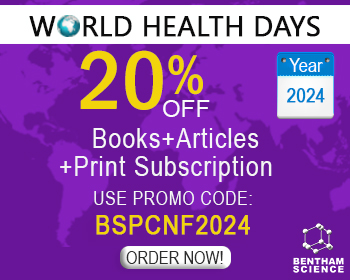Abstract
Background: 18β- glycyrrhetinic acid (Gly) is the major bioactive component of licorice roots and rhizomes of the Glycyrrhiza glabra species. It shows many activities such as antiviral, anti-inflammatory, antioxidant, antimicrobial, and antifungal, however, its use in the health field is very limited due to the low water solubility.
Methods: This paper deals with the development of a new technological approach for Gly dissolution rate enhancement. It consists of Gly intercalation (guest) in the interlamellar spaces between the inorganic spaces (host) of the anionic clays “hydrotalcites” (HTlc) to obtain hybrids MgAl-HTlc-Gly and ZnAl-HTlc-Gly. Gly can find applications in both systemic and local therapies, thus advantages of the use of the hybrids in these two fields were investigated.
Results: Gly dissolution rate from hybrids in the intestinal environment, site in which it is preferentially absorbed, resulted enhanced (ZnAl-HTlc-Gly > MgAl-HTlc-Gly) compared to the crystalline form, thereby, making them suitable for oral administration as dry powder in hard capsules.
For a local therapy, bioadhesive, vaginal emulgels loaded with the hybrids were developed. These showed suitable mucoadhesive property to the vaginal mucosa, necessary to prolong the residence time in the application site. The emulgel containing ZnAl-HTlc-Gly showed a faster and higher release profile than that containing MgAl- HTlc-Gly.
Conclusion: The obtained results suggest that Gly intercalation into HTlc, especially in ZnAl-HTlc, allows to enhance Gly dissolution when the hybrids are formulated both as oral or topical products.
Keywords: 18β- glycyrrhetinic acid, hydrotalcite, solubility, oral powder, vaginal emulgel, Gly intercalation.
[http://dx.doi.org/10.1080/10915810701351228] [PMID: 17613133]
[http://dx.doi.org/10.1007/978-3-030-04408-4_1]
[http://dx.doi.org/10.1177/1934578X1300800335] [PMID: 23678825]
[http://dx.doi.org/10.1515/cipms-2016-0024]
[http://dx.doi.org/10.1055/s-0035-1557893] [PMID: 26366756]
[http://dx.doi.org/10.1371/journal.pone.0165831] [PMID: 27820854]
[http://dx.doi.org/10.1007/s10096-015-2570-z] [PMID: 26780691]
[http://dx.doi.org/10.1002/ptr.2693] [PMID: 19067381]
[http://dx.doi.org/10.1021/acs.jafc.6b02954] [PMID: 27696846]
[http://dx.doi.org/10.1111/exd.12931] [PMID: 26739065]
[http://dx.doi.org/10.1002/9780470330319]
[http://dx.doi.org/10.1016/j.molstruc.2017.07.104]
[http://dx.doi.org/10.1016/j.ejmech.2019.01.074] [PMID: 30731401]
[http://dx.doi.org/10.3109/10717540903581679] [PMID: 20136625]
[http://dx.doi.org/10.1016/j.ijpharm.2011.12.007] [PMID: 22183131]
[PMID: 25901144]
[http://dx.doi.org/10.1007/s11434-009-0249-5]
[http://dx.doi.org/10.1016/j.reactfunctpolym.2016.12.011]
[http://dx.doi.org/10.1016/j.clay.2013.12.002]
[http://dx.doi.org/10.1016/j.clay.2011.06.006]
[http://dx.doi.org/10.1111/jphp.12634] [PMID: 27734495]
[http://dx.doi.org/10.1517/17425247.2012.733693] [PMID: 23061519]
[http://dx.doi.org/10.1016/j.clay.2015.06.014]
[http://dx.doi.org/10.1007/s11172-015-1172-3]
[http://dx.doi.org/10.1002/jps.24612] [PMID: 26280093]
[http://dx.doi.org/10.4155/fso.15.6]
[http://dx.doi.org/10.3390/cosmetics6020035]
[http://dx.doi.org/10.1111/ijfs.13544]
[http://dx.doi.org/10.1002/(SICI)1099-0682(199810)1998:10<1439:AID-EJIC1439>3.0.CO;2-1]
[http://dx.doi.org/10.1002/jsfa.2351]
[http://dx.doi.org/10.1007/s13346-016-0300-4] [PMID: 27206446]
[http://dx.doi.org/10.1016/j.ejpb.2011.12.011] [PMID: 22230797]
[http://dx.doi.org/10.1016/j.clay.2017.10.030]
[http://dx.doi.org/10.1111/j.2042-7158.1994.tb03756.x] [PMID: 8021802]
[http://dx.doi.org/10.1016/S1473-3099(18)30103-8]
[http://dx.doi.org/10.1128/AAC.01065-17] [PMID: 28696240]
[http://dx.doi.org/10.14295/bds.2013.v16i3.909]
[http://dx.doi.org/10.5772/55178]
[http://dx.doi.org/10.3109/10837450.2013.846371] [PMID: 24160773]
[http://dx.doi.org/10.1163/138577209X12478283327236]
[http://dx.doi.org/10.1016/0168-3659(87)90035-6]
[http://dx.doi.org/10.1016/0378-5173(86)90147-X]


























